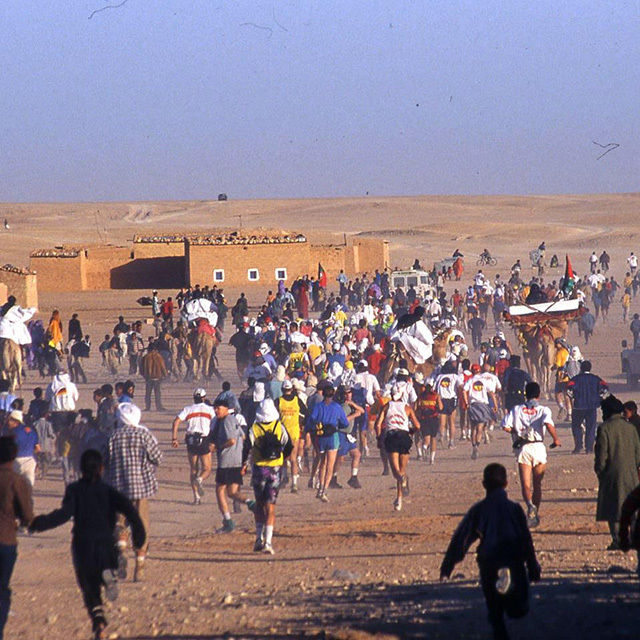
Making this race even more arduous is the fact that participants are entirely unsupported. One runs the risk of bursting their shoe in such conditions.”

Even the flat surfaces have rocky terrain, with small, pointy and sharp rocks created due to sand erosion. Not to mention, the sand can get really hot. Then, there are the sand dunes, which are tricky and strenuous to climb, because it is soft ground, and you don’t gain as much distance as you think you are gaining. While climbing up, you face the risk of sliding down, as the base is loose sand. “The mountains too, are rocky and sandy at the same time. “There are times when the sand is way above the ankle, making it difficult while you are trying to move the lucky patches are when only your foot is in sand,” says Ghosh. The terrain of the Sahara desert is also unrelenting, with rocky mountains, intense sandstorms and miles of high sandy dunes. MDS participants face extreme conditions, running in temperatures touching 40 degree Celsius. The sand dunes, says Ghosh, are tricky and strenuous to climb, “because it is soft ground, and you don’t gain as much distance as you think you are gaining” But Marathon des Sables, she was aware, came nothing close. you can’t run away to the hills and mountains, not if you have a full-time job at least.” Ghosh had previously done a 75 km-desert run in Pokhran, Rajasthan. “Here, we do not have exposure to different terrains. Training in Gurugram brought its own set of challenges. This puts me in a good state of endurance.” I just train for one, and for a substantial amount of time. “I also don’t do too many races in the year. Running marathons since 2012, Ghosh, who has a full-time tech marketing job, says she had the advantage, “because I am always in training.

It is among the toughest races in the world, with one of the highest attrition rates. Gurugram-based Mahasweta Ghosh, 44, ran the 250 km-long Marathon des Sables last month.


 0 kommentar(er)
0 kommentar(er)
